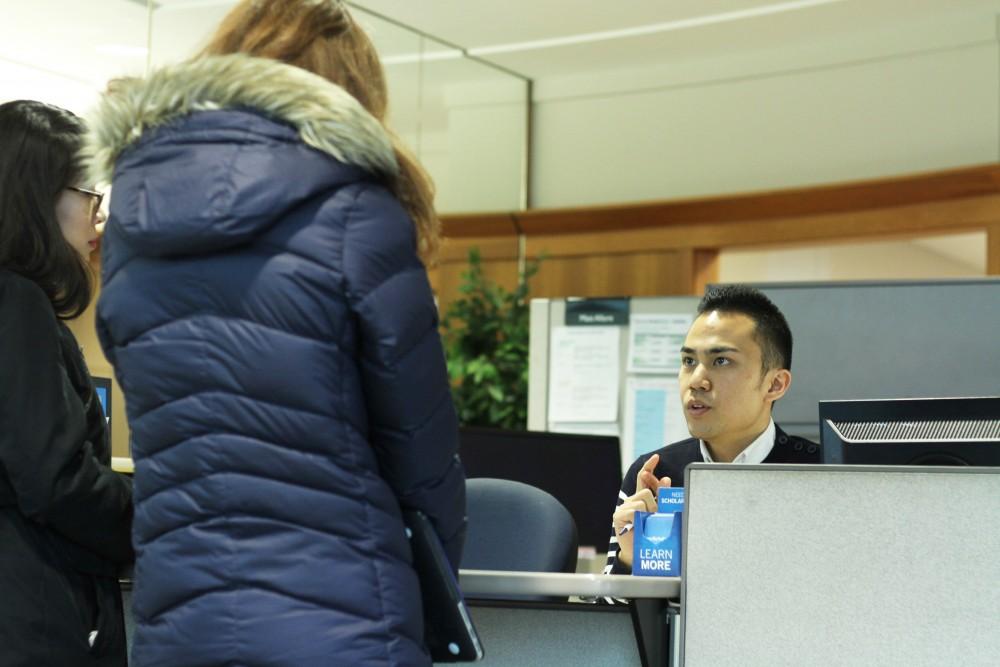What to know before filling out the FAFSA

GVL / Kasey Garvelink – Mic Garcia helps students that have questions regarding FAFSA on Feb. 26, 2016 in Allendale.
Feb 29, 2016
As the deadline for the FAFSA looms just over the horizon, the Grand Valley State University Financial Aid Office is helping students avoid unnecessary headache by offering one-on-one assistance with filling out the form.
The FAFSA, or the Free Application for Federal Student Aid, is a form that determines if students are eligible to receive financial aid. Financial aid can come in the form of grants, scholarships, loans, or work studies.
Students looking to receive financial aid are expected to complete the form by March 1. If the form is completed past the deadline, students will still be eligible, but not guaranteed, to receive financial aid.
The Financial Aid Office offers walk-in hours for students to fill out the FAFSA on weekdays between 9 a.m. and 4 p.m. There, students can complete the form on one of two available computers with assistance from front desk employees or office counselors.
Nicholas Bromley, assistant director of financial aid, said students should come prepared with tax documents and proof of identification necessary to fill out the FAFSA.
“Students can bring in tax documents from 2015 if the student and parent(s) have already filled out taxes for that year, or (tax documents) from the previous year,” Bromley said. “Students should also bring in identification cards such as a social security card, that way the way their name appears on their social security card is the way it’s put into the FAFSA.”
New to this year’s FAFSA is the requirement of an online FSA ID for both the student and their parent. In previous years, students would simply use a federal pen to sign their form.
Lauren McElrath, assistant director of Financial Aid, said creating the FSA ID is a whole separate process that should be completed before a student fills out the FAFSA.
“I would say creating the FSA ID is one of the most important things students need to know because they don’t know they need to do it until the end,” McElrath said. “They’ll submit it without a signature and it comes to us rejected, which prolongs the FAFSA processing.”
Although not every student will be eligible to earn grant money, Bromley encourages all individuals to fill out the FAFSA regardless of their financial status.
“Some families assume they won’t be eligible for any need-based aid like grants, but they don’t really know that for sure unless they do the FAFSA,” Bromley said. “And some families are on the border, so it’s worth doing it to find out.”
McElrath added that the FAFSA is worth filling out, since everyone who completes it is guaranteed some form of financial aid.
“At the very least, you will be offered a loan – a low interest loan, for one, and a loan that doesn’t require a co-signer,” she said. “Most families say they don’t want a loan and they will go straight to Sallie Mae or their local bank, but they just missed out on this low-interest loan that you don’t have to co-sign.”
A financial aid counselor will also be available to assist students this Tuesday, Wednesday and Thursday from 11 a.m. to 4 p.m. at the North C building on GVSU’s Allendale Campus.
For more information about the FAFSA, visit www.gvsu.edu/financialaid.

























